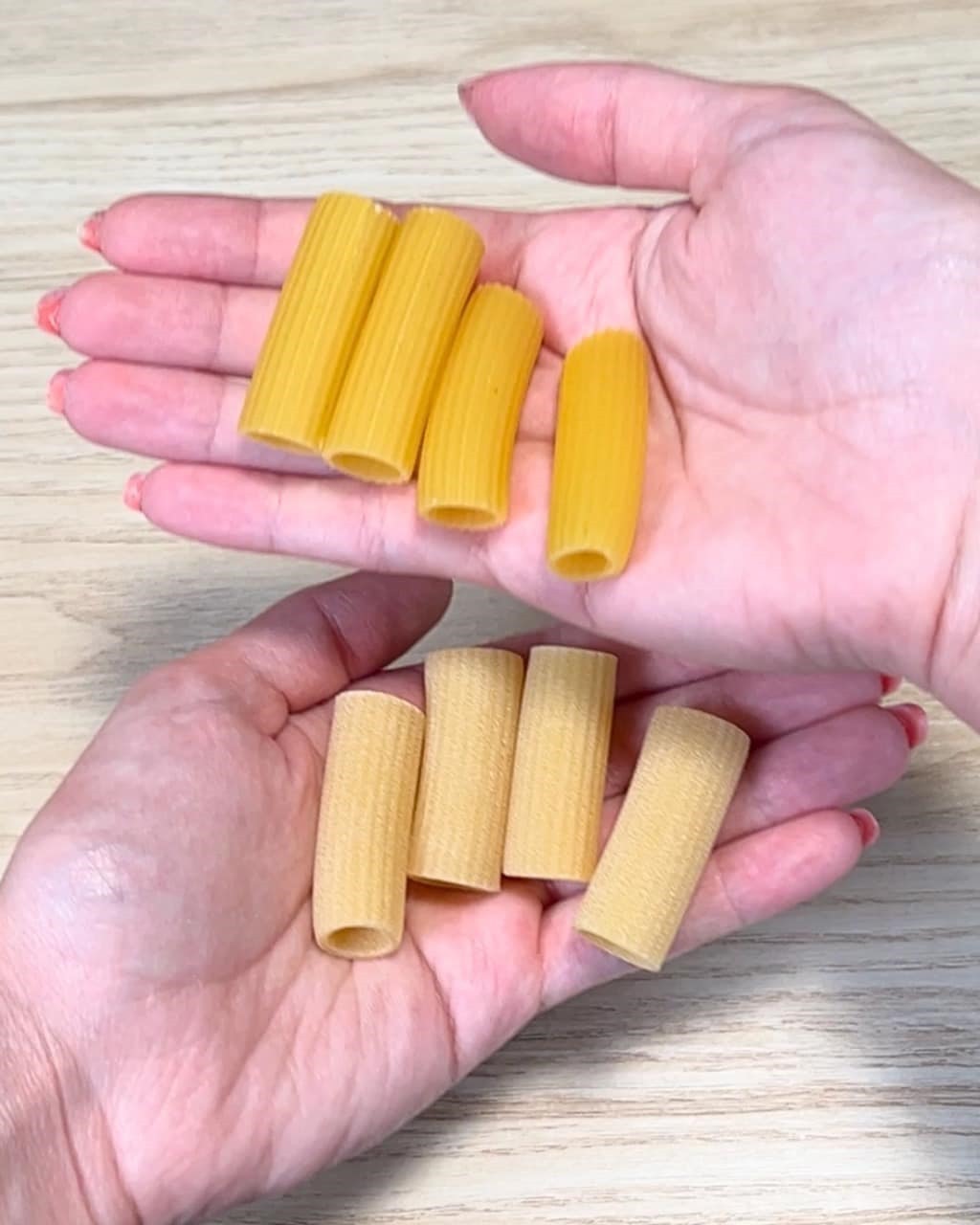ADVERTISEMENT
### **2. The Significance of Pasta Color**
Color isn’t just about appearance; it plays a critical role in the quality of pasta. When you buy pasta, the color can often be an indication of the ingredients used, the process of production, and, ultimately, how it will taste and cook.
#### **Natural Color Indicators**
The color of pasta is often a direct reflection of the ingredients used. For example, traditional pasta made from durum wheat semolina will have a deep yellow or golden hue, indicative of the wheat’s natural pigments. Pasta made with added ingredients, like spinach or tomatoes, will have green or red hues, respectively. These colors not only add aesthetic value but also indicate the freshness and authenticity of the ingredients.
#### **Why Color Matters in Pasta Quality**
The color of pasta is an essential factor in determining its quality. Pasta with a vibrant color often indicates that high-quality wheat or other fresh ingredients were used in the dough. The color also gives insight into the production process, as premium pasta makers typically use slower, artisanal drying techniques, which preserve both the flavor and texture of the pasta.
—
### **3. Factors That Influence the Color of Pasta**
Several factors contribute to the color of pasta. These include the type of wheat used, the flour’s milling process, the drying techniques, and any additional ingredients incorporated into the dough.
#### **The Type of Wheat Used**
The most commonly used wheat in pasta production is **durum wheat** (Triticum durum). Durum wheat is hard wheat that is rich in yellow pigments, specifically **carotenoids**, which give pasta its signature golden hue. The high gluten content in durum wheat also contributes to the texture of the pasta, allowing it to hold its shape well during cooking.
Pasta made from regular wheat flour, such as all-purpose flour, is often less golden and may appear paler than pasta made from durum wheat.
#### **Durum Wheat vs. Regular Wheat**
Durum wheat produces pasta with a firmer texture, making it ideal for maintaining its shape during cooking. In contrast, pasta made from regular wheat or low-quality wheat flours can be softer and less durable, sometimes resulting in pasta that is mushy or clumpy after cooking.
In terms of color, pasta made from durum wheat semolina retains a bright yellow to golden color, while pasta made from regular wheat may appear pale or dull.
#### **The Role of Milling and Flour Quality**
Milling is the process by which wheat is ground into flour, and this plays a significant role in the final appearance of the pasta. In traditional pasta-making, **semolina** (a coarser, more granular flour) is preferred, and its high protein content contributes to both the texture and color of the pasta. On the other hand, finely milled flours may produce a softer, paler pasta.
The quality of the wheat used also determines the overall hue. High-quality durum wheat semolina typically yields a vibrant yellow pasta, while lower-quality wheat may result in a less appealing, more pale color.
#### **Additional Ingredients that Affect Color**
In addition to durum wheat, pasta may be colored by the inclusion of natural ingredients. For example:
– **Spinach**: Adds a green hue to the dough, creating spinach-flavored pasta, such as spinach fettuccine.
– **Tomato**: Imparts a reddish hue to the dough, used in varieties like tomato basil pasta.
– **Beetroot**: Often used to create a pinkish or deep red pasta.
– **Squid Ink**: Produces black pasta, a popular feature in seafood dishes.
Each of these ingredients not only changes the color but also contributes additional flavor and texture to the pasta.
—
### **4. How to Identify High-Quality Pasta by Color**
When choosing pasta, whether in the store or at an artisanal shop, examining the color can give you significant clues about its quality. Here’s what to look for:
#### **The Deep Yellow of Good Pasta**
High-quality pasta made from durum wheat semolina will have a rich, golden-yellow color. This vibrant hue is indicative of the natural carotenoids in durum wheat, which are preserved during the production process. A rich yellow color suggests that the pasta has been made with high-quality semolina and that it was dried slowly, preserving its integrity.
For Complete Cooking STEPS Please Head On Over To Next Page Or Open button (>) and don’t forget to SHARE with your Facebook friends
ADVERTISEMENT
ADVERTISEMENT
